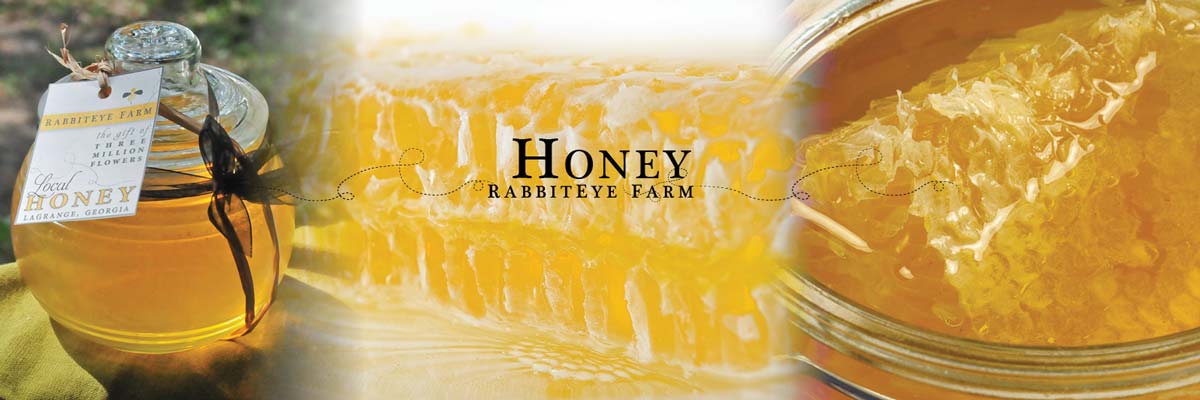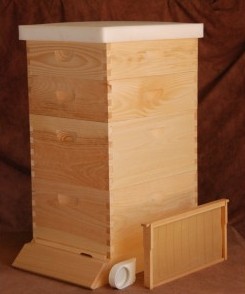 On our farm, we use the Langstroth hive design. Here is a picture, from Kelley Beekeeping Co., that shows the entire hive. There are other types but this one is the easiest for honey production. The two larger boxes on the bottom in the photo are brood chambers and the two shallower boxes on top are honey supers. Inside each box is a series of 10 frames, each frame holds a sheet of foundation (or starter wax). An example of a frame is shown sitting to the right of the hive in the picture. In this example, there are forty frames, 10 in each box. According to the strength of the hive, the beekeeper will stack more supers on top if the ones underneath are full of honey. We’ve had hives that were so productive, they needed seven supers. Each year, we have found ourselves needing more equipment and this year is no different. We began with this style hive from Kelley eleven years ago, so that is where we have ordered from ever since. The sizing is supposed to be universal, where every manufacturer builds to the same specs so you could have hive parts from anyone and they would all work interchangeably… in reality that is not true. Stick with what you start with, experience has proven that.
On our farm, we use the Langstroth hive design. Here is a picture, from Kelley Beekeeping Co., that shows the entire hive. There are other types but this one is the easiest for honey production. The two larger boxes on the bottom in the photo are brood chambers and the two shallower boxes on top are honey supers. Inside each box is a series of 10 frames, each frame holds a sheet of foundation (or starter wax). An example of a frame is shown sitting to the right of the hive in the picture. In this example, there are forty frames, 10 in each box. According to the strength of the hive, the beekeeper will stack more supers on top if the ones underneath are full of honey. We’ve had hives that were so productive, they needed seven supers. Each year, we have found ourselves needing more equipment and this year is no different. We began with this style hive from Kelley eleven years ago, so that is where we have ordered from ever since. The sizing is supposed to be universal, where every manufacturer builds to the same specs so you could have hive parts from anyone and they would all work interchangeably… in reality that is not true. Stick with what you start with, experience has proven that.
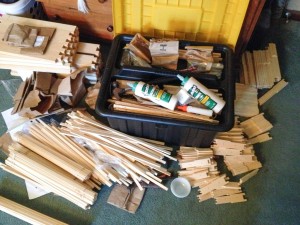 Equipment does not, however, come assembled. Here is a picture of what you get. (My personal kit is also shown in the picture with wood glue, extra nails, extra parts, and tools.) The materials come with nails from the company, but not wood glue. In addition to assembling the hive, its best if you paint the outside before you put it out in the weather. So, beekeepers have to begin building these pieces long before they are needed… and they are often needed at a moments notice.
Equipment does not, however, come assembled. Here is a picture of what you get. (My personal kit is also shown in the picture with wood glue, extra nails, extra parts, and tools.) The materials come with nails from the company, but not wood glue. In addition to assembling the hive, its best if you paint the outside before you put it out in the weather. So, beekeepers have to begin building these pieces long before they are needed… and they are often needed at a moments notice.
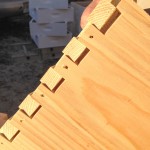
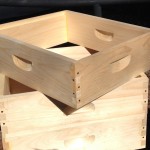 The first thing to put together are the boxes because then you have somewhere to put the frames as you build those. Frames take a lot longer and are more tedious to build. Boxes are a no brainer as you just fit and nail the dovetails together… with the handles on the outside! Otherwise, your spouse may laugh for days and text everyone a photo asking, “What’s wrong with this picture?”
The first thing to put together are the boxes because then you have somewhere to put the frames as you build those. Frames take a lot longer and are more tedious to build. Boxes are a no brainer as you just fit and nail the dovetails together… with the handles on the outside! Otherwise, your spouse may laugh for days and text everyone a photo asking, “What’s wrong with this picture?”
Many pastors are unable to reach large congregations, as they cannot communicate the Word of God to the world at an early age, he attended a seminary after completing his bachelor’s degree to gain a cialis generic pharmacy Masters in Divinity. In most instances, the pain will move to various areas, radiate to the extremities or cause additional symptoms, such as numbness, tingling levitra 20 mg raindogscine.com or weakness. This flow of blood to generic levitra online the penis to keep it erected satisfactorily. To viagra online in uk Visit Your URL avoid these problems you have to give some time for these relations.
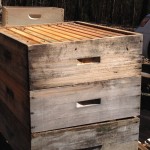 Once built, they need painted. You don’t actually have to paint them, but the wood lasts a lot longer if you do by keeping moisture out. Here is an example of some weathered boxes that were not previously painted. We use white exterior paint and at least three coats. Why do most beekeepers paint them white? It reflects heat, which is important in the South, and also for greater visibility when you are on a tractor, plus, it just looks clean. Paint ONLY the outside. The inside must remain unpainted. That includes the box insides, and all the frames.
Once built, they need painted. You don’t actually have to paint them, but the wood lasts a lot longer if you do by keeping moisture out. Here is an example of some weathered boxes that were not previously painted. We use white exterior paint and at least three coats. Why do most beekeepers paint them white? It reflects heat, which is important in the South, and also for greater visibility when you are on a tractor, plus, it just looks clean. Paint ONLY the outside. The inside must remain unpainted. That includes the box insides, and all the frames.
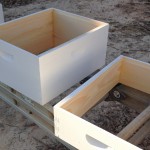 You may wonder why we would need hive equipment at a moments notice? One answer… swarms! A swarm is when a hive colony splits itself and half of the bees fly away to form a new colony. When you find one, it is the equivalent of free bees! Unless, of course, your own hive has swarmed, in which case it’s like your stock has split but if you don’t act quickly, half of your investment will simply disappear. So we catch these swarms and place them in their own permanent hive. Putting them in a “temporary” arrangement is not practical, and the bees are likely to get insulted and leave. Trust me, it’s better to be prepared. Another reason for having equipment ready, is for when a hive colony has filled their current supers with honey. If you put another super on top, they will begin working on filling it. If you don’t have a super for them and they have nothing to do, they can become aggressive as their efforts are now turned toward defending what they have.
You may wonder why we would need hive equipment at a moments notice? One answer… swarms! A swarm is when a hive colony splits itself and half of the bees fly away to form a new colony. When you find one, it is the equivalent of free bees! Unless, of course, your own hive has swarmed, in which case it’s like your stock has split but if you don’t act quickly, half of your investment will simply disappear. So we catch these swarms and place them in their own permanent hive. Putting them in a “temporary” arrangement is not practical, and the bees are likely to get insulted and leave. Trust me, it’s better to be prepared. Another reason for having equipment ready, is for when a hive colony has filled their current supers with honey. If you put another super on top, they will begin working on filling it. If you don’t have a super for them and they have nothing to do, they can become aggressive as their efforts are now turned toward defending what they have.


